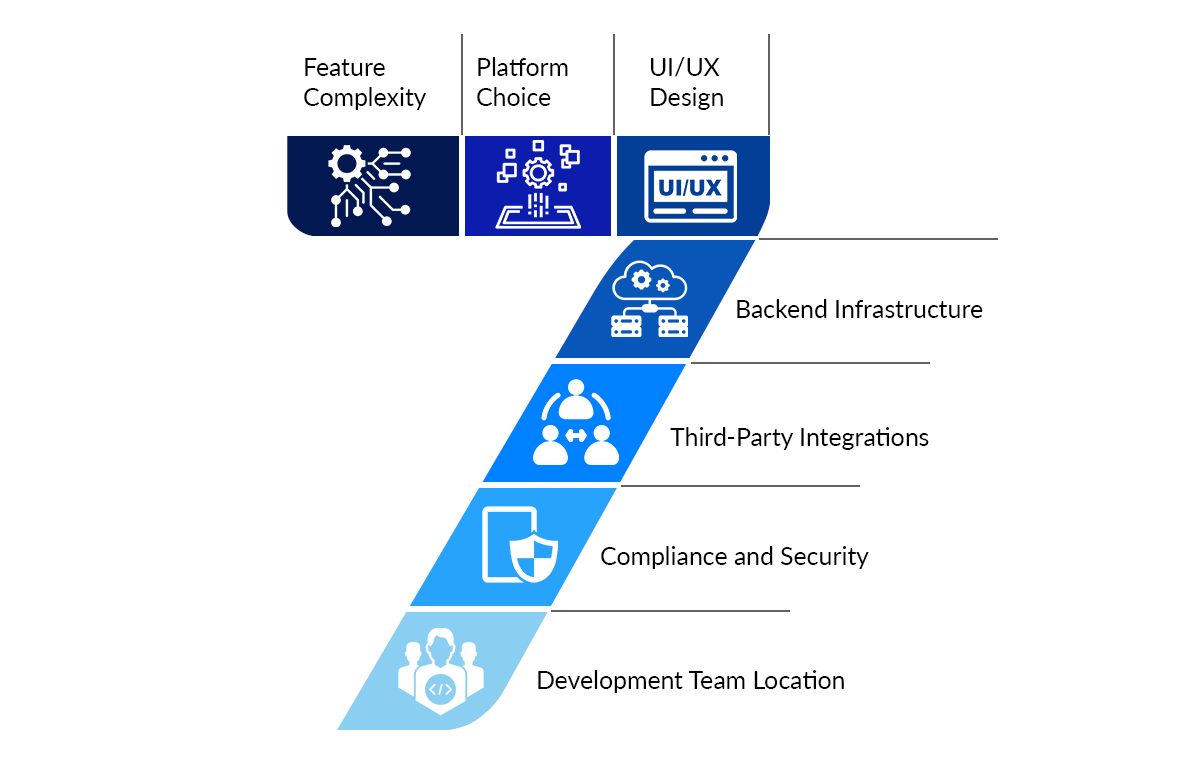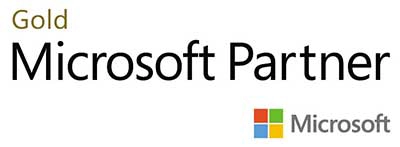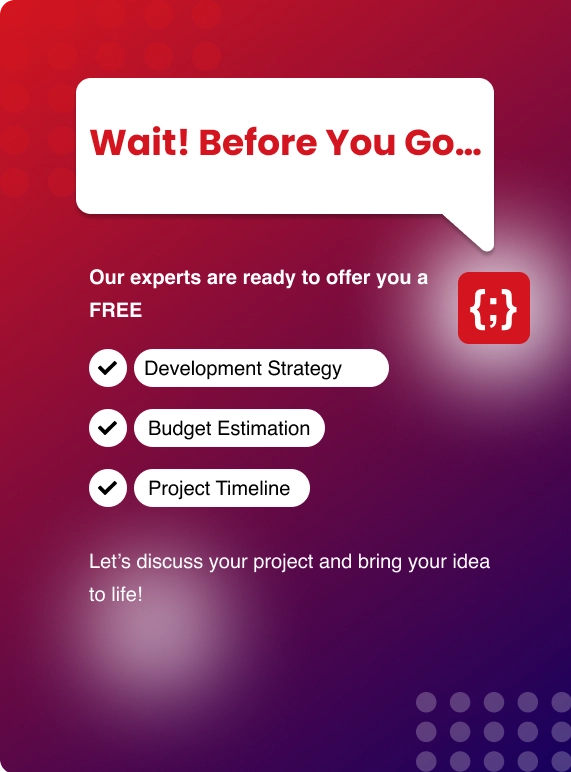Planning to build a healthcare application in 2025, something like Practo, means you'd have to factor in the costs. Various factors influence the costs that go into the final budget, including the complexity of features, selection of the platform, regulatory adherence, and so on.
With state-of-the-art AI, blockchain, and telehealth technologies, the costs would vary drastically against each other. The blog will highlight major cost parameters and a summary for development within the timeline set, further presenting useful strategies to save costs for developing this near-state-of-the-art healthcare app.
This guide will help a startup and an established healthcare provider with an idea of the investment needed for bringing their vision into a reality.
The Increasing Demand for Healthcare Apps Like Practo in 2025
The global market for digital health, expected to cross $660 billion in value by 2025, indicates that there is a great amount of room for growth for developing healthcare apps. The telemedicine market is the only segment that is expected to register the largest CAGR during the projection period.
This surge in demand is driven by several converging factors: increasing smartphone penetration, the growing need for accessible and convenient healthcare, and the rising prevalence of chronic diseases.
The following increment in the demand of modern healthcare apps is driven by several factors, such as growing accessibility of smartphone features, smart health tracking, and real-time healthcare support.
Here are the growth factors of healthcare apps like Practo:
- Increased Digital Literacy and Smartphone Penetration: With the advent of the latest innovations, we’re more equipped digitally. By the year 2025, the great majority of the population will have access to smartphones and hence healthcare apps. This shift towards mobile-first interactions creates a strong demand for and-on healthcare services.
- Demand for Convenient and Accessible Healthcare: Patients want an easy way to manage their various healthcare needs, from appointment scheduling to the accessibility of medical records.
- Healthcare apps such as Practo provide on-demand facilitation of doctors, lab tests, and medicines, virtually obviating the requirement for time-consuming direct consultations. Telemedicine acceptance is rapidly spreading.
- Rising Prevalence of Chronic Diseases: Chronic diseases like diabetes, cardiac ailments, and hypertension have become a global concern. Healthcare applications are great avenues for the management of such illnesses as they enable patients to track symptoms, medicines, and patients' health providers.
- Preventative Care Focus: Preventive healthcare is becoming increasingly prevalent. Fitness, diets, and mental health analysis fall under health-tracking apps that will help users manage their health proactively. A large number of smartphone users use at least one health-related application.
Key Features of A Healthcare App like Practo?
Below is a detailed analysis of the Practo app's core features that will help in determining its development cost:
1. User Registration and Profile of the Patients and Doctors
Any robust health application should, therefore, guarantee secure and easy registration. It must abide by strict data privacy laws like GDPR and HIPAA-compliant platforms.
The doctor's profile must contain all the details regarding qualifications, certifications, specializations, and experience to establish trust and credibility.
The patient profile should be able to provide a smooth user experience while creating profiles or modifying details. Patients should be able to conveniently track their personal details and medical information.
2. Appointment Scheduling
An appointment in real time avoids the long wait times. Users can browse doctor availability through integration into calendars and pick the time slots according to their convenience.Healthcare app features like waitlist management and appointment rescheduling would be optimal, keeping doctors aware of their schedules and offering relief to the patients. It should consider time zone differences in the above matters and allow global users.
3. Telemedicine Capabilities
Video and audio consultations enable contact between patients and service providers outside clinics, besides expanding services through telephonic communication services. Screen and document sharing are vitally important for remote diagnosis and treatment.An integrated telemedicine application with electronic health records EHRs offers a smooth patient experience. This will allow for simple accommodation for individuals of different technical levels.
4. E-Prescriptions
Creating and managing prescriptions digitally streamlines the medication distribution process, minimizing errors and maximizing patient safety. The integration with pharmacies provides a seamless way to fill prescriptions.Patient access to their prescription history is crucial. Medication reminders and refill requests further support compliance. E-prescribing must comply with regulations and security standards.
5. Payment Integration
Secure payment gateways make payments convenient and easy. Integration with billing systems supports insurance claims and payment reconciliations.Payment gateways would ensure security through compliance with PCI DSS. The system must support multiple payment avenues, i.e., credit cards, debit cards, and digital wallets.
6. In-app Notifications
Automated alerts for appointments, medication reminders, and follow-up improve adherence and engagement on the part of the patient. Personalized notifications make the experience more user-friendly and provide real-time information about the happening.Notification through in-app notifications, SMS, and email notifications is necessary. Users should be able to customize the notification settings so they can control how often and what type of alerts they get.
7. Search and Filter Options
Powerful search and filter capabilities will allow patients to find healthcare providers in terms of specialty, location, availability, and so on, but general. Map integrations and advanced filters will also help boost the efficiency of the search.The search should give preference to the most relevant results. Also, it should have accurate information. The system should allow among many others the following search parameters: insurance coverage, languages, review ratings by patients, and geolocation-based searches.
8. User Reviews and Ratings
Feedback mechanisms help patients relate their experiences while taking other users into their confidence. Ratings and reviews provide patients with both knowledge and confidence in deciding on healthcare providers.The system should guard against deceptive reviews and thus allow only authentic ones. A provider must be able to respond to reviews and concerns raised by patients. The system should allow users to report inappropriate reviews.
9. Health Records Management
The safe storage and retrieval of the patient’s medical history improve care - stream continuity and coordination. Allowing patients to have access to their medical records gives them control over their health.Healthcare software applications like record management are subject to strict data privacy and security rules. The system should encompass the management of multiple medical records like lab results, imaging reports, and lists of medications.

Factors Influencing The Cost of Developing a Healthcare App Like Practo
.png)
1. Feature Complexity
The complexity of the features you put in directly corresponds to the time and effort for development, thereby impacting costs.
- Basic functionalities such as user registration, doctor search, and booking appointments can be quite elementary
- Advanced features like real-time video consultations, AI-driven symptom checkers, or advanced analytics for health data—require quite a number of resources for development.
In the previous section, we have mentioned important features that a healthcare app like Practo should have. You can create your own list of features that can make your healthcare app complete.
2. Platform Choice
The costs will be influenced, of course, by whether you develop for iOS, Android, or both.
- Native development (using a platform-specific language like Swift for iOS, or Kotlin/Java for Android) may be the best option in terms of performance but needs a separate team because it will cost more.
- Cross-platform development can be done using a tool such as React Native or Flutter, building out a codebase just once and minimizing the time and cost associated with development. However, trade-offs at either end may exist when it comes to performance.
Identify which of the mobile app platforms your potential audience prefers through market research. Estimation of native versus cross-platform development based on performance needs versus budget.
3. UI/UX Design
Good and effective UI/UX design relies mostly on the use and consumes actively attuned methods to develop. To facilitate high fidelity, interactive prototypes, and user testing have lessened the burden on users, yet they do involve additional costs in the designing phase.
Healthcare is an application that strictly adheres to the details of what should be absolutely clear, accessible, and easy to navigate for 100% of users, even the very least technologically aware.
Invest in comprehensive user research and usability testing of your audiences to find out what they want and need from the site. Enter accessibility guidelines to improve app usability for disabled individuals. A clean and professional design adds credibility and trustworthiness in the eyes of users.
4. Backend Infrastructure
The backend system includes servers, databases, and scalability, and these will determine the application's performance and reliability.
- Cloud-based sites (like AWS, Azure, Google Cloud) offer scalability and flexibility, in return for subscription costs.
- Database design and optimization are required for quick data storage and retrieval, especially with sensitive medical data.
Encryption and access control must be very strong so that patient data is secure. Ensure that consideration for growth and scalability is in the specification design of your initial infrastructure.
5. Third-Party Integrations
Another way for third-party APIs to contribute to development costs is through integration for payment gateways, notification services, and EHR systems. Each API integration costs time for development, time for testing, and time for potential licensing fees.
The guarded integration of healthcare APIs becomes critical for data exchange and interoperability. For example, healthcare CRM software apps provide necessary features to share necessary information whenever required.
Thus, you need to check that third-party integrations comply with all relevant security and privacy standards. Cost and benefit analysis for every API based upon its utility and dependability.
6. Compliance and Security
Healthcare software must comply with strict laws like HIPAA in the US and GDPR in Europe.
- The implementation of extensive security features such as data encryption, access control, and regular security audits tends to increase development costs.
- Healthcare standards establish trust through their compliance as it helps avoid legal penalties.
- Consult with legal and compliance experts to ensure all pertinent regulation is complied with.
7. Development Team Location
The location from where you hire the healthcare app development team matters a lot. In developed countries, there are far higher price tags on services than in the case of developing countries.
You should also consider their approach while working with clients, communication aspects, and compare time zone differences to choose the right development teams.
Consider cost-quality differences across various sites while selecting a development team. The development team should have experience in handling healthcare app development.
Estimated Healthcare App Development Cost Breakdown
There will be a good amount of investment required to build a full-fledged healthcare app that meets your business needs, and serves patients as well as doctors seamlessly.
Here is the cost breakdown of a healthcare app like Practo across all the stages
1. UI/UX Design: $7,000 to $15,000
This stage is extremely crucial in delivering a better and more intuitive user experience. Developing basic wireframes and mockups is less expensive than the process of high-fidelity designs with interactive prototypes.
An extensive research study helps to elevate the cost somewhat, but it has a very positive effect on the project outcome. Unique visual elements can be vital to the experience of the users but can obviously increase design costs.
Designing for the disabled requires expertise and time beyond what would typically be needed. This figure also covers research, wireframing, prototyping, and actual design design.
2. Frontend Development: $10,000 to $25,000
It involves translating UIs and UXs into effective code for the interface of the app. Also, it involves working analysis of your application within various screen sizes and devices.
Using those ready-to-implement UI components increases the speed, but may require custom components as well. The frontend data involves coding the visible components, the user interactions, and finally the data displayed.
3. Backend Development: $20,000 to $40,000
This is the app's heart. It includes several factors like server setup, database management, and the APIs developed. Careful thinking and application must be applied in building the back end for a growing number of users.
Also, introducing robust safety measures is necessary not to compromise sensitive medical data. Choosing a cloud provider (AWS, Azure, Google Cloud) influences ongoing costs. Server building, database design, API development, security implementation are all included.
4. API Integration: $5,000 to $10,000
This means integrating third-party services like payment gateways, notification services, and EHR systems. More integrations will mean more development time and other potential licensing fees.
All data that is transferred through the API implies coding and testing among others. There may also be possible licensing fees for API integrations. Secure integration with healthcare APIs is imperative for data exchange.
5. Testing and Quality Assurance: $10,000 to $15,000
This stage is crucial for ensuring the app's functionality, performance, and security. Functionality testing, performance testing, security testing, and usability: all these are necessary cost factors.
In the long run, automated testing would be cost-effective. However, building it would take up-front cash. Testing a broad range of devices/OS combinations would increase your costs. This includes test-planning, test-case development, execution, and bug-fixing.
6. Deployment: $5,000 or more
This takes account of publishing the apps on app stores and establishing the production environment. Developer fees are charged by the Apple App Store and Google Play Store. The costs of hosting and maintaining backend infrastructure are incurred going forward.
Using a CDN may seem to improve performance, yet it, too, will inflate the expenditure. Besides, the initial marketing cost includes app store submission, server setting up, and the first deployment.
7. Total Estimated Cost: $80,000 to $120,000 or more
This broadly defines the cost of designing a feature-loaded health app like Practo. You need to consider the factors that contribute to the cost of developing healthcare apps like Practo:
-
Advanced features lead to heavier cost burdens overall.
-
Native development incurs more cost than cross-platform development.
-
Developer costs vary based on region.
-
The longer the time to realize the project, the more costly it is.
This should give a realistic evaluation of a high-quality, scalable healthcare app.
Partner with Zenesys to Meet Your Healthcare App Development Needs
Whether you need a telemedicine platform, a patient management app, or a comprehensive healthcare ecosystem, we have the expertise to build a mobile app. We offer a consultative approach, to ensure that the final product matches your vision.
Partner with Zenesys and experience:
- Enhanced patient engagement and satisfaction.
- Improved operational efficiency and productivity.
- Increased access to healthcare services.
- Robust data security and compliance.
- A reliable and scalable healthcare app.
.png?lang=en-US&ext=.png)

.webp?lang=en-US&ext=.webp)

.webp?lang=en-US&ext=.webp)

